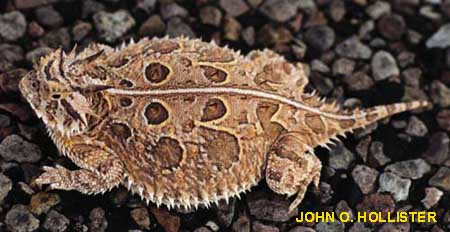Class
Vertebrata
It belongs to Class Vertebrata because it has a bony endoskeleton, a well developed body cavity containing visceral systems, a perforated pharynx, and an overall general body plan consisting of a head, trunk, 2 pairs of appendages, and a post-anal tail.
Order
Reptilia
It belongs to the Order Reptilia because it is an amniote (its eggs are protected by an extra membrane called an amnion). Its eggs are also covered with a leathery calcium-based shell. It uses lungs for respiration. It also shares characteristics with having horny and epidermal scaly skin.
Suborder
Iguania
It belongs to the Suborder Iguania because of its laterally positioned eyes that have an immovable membrane, it also has spines that are on its back and along its sides, and the larger plate like scales on its head.
Family
Phrynosomatidae
It belongs to the Family Phrynosomatidae because of its pleurodont teeth, a reduction of a clavicular flange its also is in a monophyletic group known because of the absence of lacrimals and postfrontals. Another very distinct characteristic is its ability to squirt blood out of the orbital sinuses of its eyes at potential predators.
Genus
Phrynosoma













